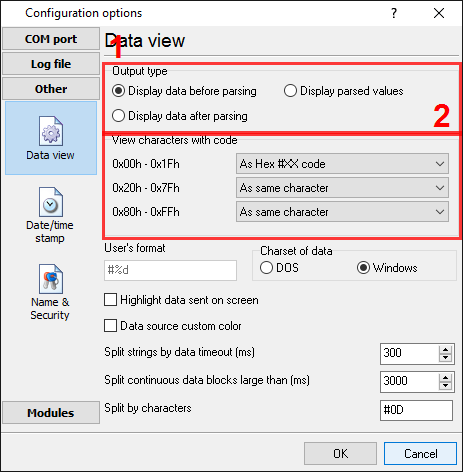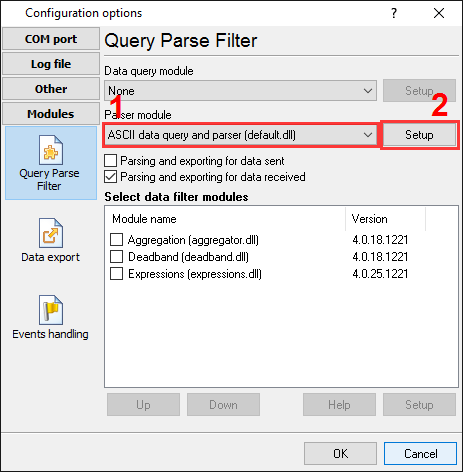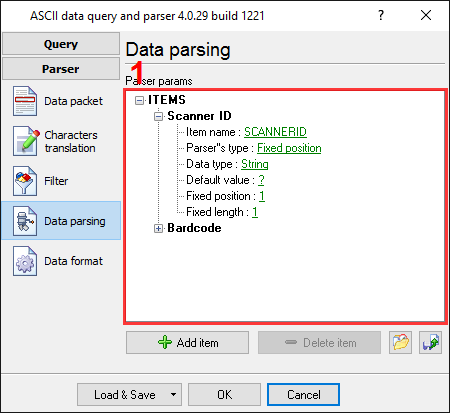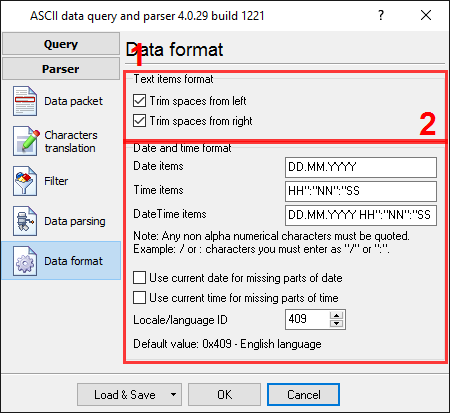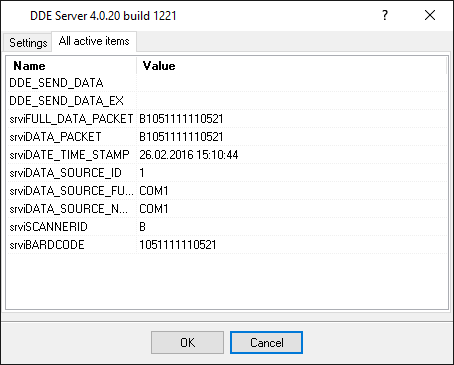Process data from a barcode scannerDownload a Free Trial Version.It allows you to try all features! Data logger plugins can be downloaded separately.
Task: We are receiving barcodes (EAN-13) from a serial port. We have some barcode scanners connected. Each one sends data when read. Data contains an identification number (the first character) and barcode information (thirteen digits). When the Data Logger receives the information from the serial port, he adds a date and time stamp. This information is registered in a log file correctly, but we should create another ASCII file with different structure in the CSV format.
Requirements:
It is assumed that: You've configured communication parameters (baud rate, the number of data bits, flow control, etc.) in the data logger and can receive any data without communication errors. Solution: The figure above shows that the data flow is very simple. Each record has a fixed size and a fixed position of each item. We need to recognize the ending characters of each data record. Please, enable display output for non-printable characters with a character code below than 0x20h. Please, set the following options.
Then click the "OK" button and try to receive data from a port. You should receive the data as in the figure below.
It is another view of the received data. All non-printable characters were replaced with their code like #0D. Now, it is clear that a data packet (in a green rectangle) ends with #0D (underlined by red). Now, we are ready for configuring modules. First, please, select the "ASCII data parser and query" plug-in (fig.4a, pos.1) from a drop-down list. Then, enable a parsing option for data received (fig. 4a, pos. 2) and select necessary data export plug-ins. The DDE server (fig.4b, pos.3) will help us check that the data packet is parsed and exported. The "Local database" plug-in will write data to an ASCII file with the CSV format.
Pic.4a. Barcode scanner data logger. The data parser plug-in.
Pic.4b. Barcode scanner data logger. Data export plug-ins. Now, please, open a configuration window of the ASCII parser and query plug-in (click the "Setup" button near a drop-down box fig.4a, pos.1). The dialog window will appear on the desktop (fig.5).
The configuration process will be very simple if you've examined your data flow in the data logger window (fig.3). You should type in the same as in the data logger window in fields 1 and 2. Field #1 marks the beginning of the data block, and field #2 marks the end. In the example, our data block does not contain a start marker. You should type a value from figure 3, which is underlined by red. Field #3 is empty because our data packet doesn't contain characters, which should be ignored. Ok. We are going to the next page. It is a very important part of the parser configuration. The parser uses this information to extract parser items (variables) from a data packet. Our data packet contains two data items, which should be split into different variables. Later, these variables will be used in the data export and data filter plug-ins. In our case, variables' values will be placed on different columns of a target CSV file.
You should add two new items by clicking the "Add item" button (fig.6, pos.7). Before adding an item, the program will ask you about an item description. You can type any characters here, which will help you to remember a variable's content. We've added all variables with corresponding descriptions on the fig.6 Each parser item has few properties:
The second item has the same parameters, just the position and the length are different. On the next page (fig.7), you can specify basic format options. Because we've specified the "String" data type for both parser variables, then the first two options allow removing blank spaces from a value. Other options are not applicable in our case.
Please, click the "OK" button and close the configuration window and then click the "OK" button again in the options window. Now, our parser is ready, and we can test it. Connect your device and power it on and try to receive a data packet from a port. If the parser is configured correctly, then the DDE server window will display our variables name and value (fig.8).
How to write data to a log file with the necessary format is described in the second part. Related articles: Process data from a barcode scannerAdvanced Serial Data Logger - Read more about:Serial port interface RS232 port logger Com port logger RS232 data logger Data Logger Software For Electricity Meter RS232 to ODBC RS232 to MySQL RS232 to MS SQL Server RS232 to database Barcode to Excel |
|
